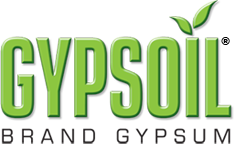Research Library
Search for research reports and other technical information related to agricultural gypsum application. Type a key word to narrow your search.
Efficiency of Sulfuric Acid, Mined Gypsum, and Two Gypsum By-Products in Soil Crusting Prevention and Sodic Soil Reclamation
| Source Publication: | Agron. J. 97:983–989 |
|---|---|
| Primary Author: | Amezketa, Aragues, Gazol |
| Institution: | American Society of Agronomy |
| Research Site: | Ebro River Basin |
| State: | Spain |
| Date/Year: | 2005 |
| Focus: | Soil Crusting, Sodic Soil, Nonsodic Soil |
| Category: | Peer Reviewed Papers |
| Crop: | Not Crop Specific |
| Reported Results: | ABSTRACT Sulfuric acid and gypsum-like by-products are potentially effective amendments in preventing soil crusting and reclaiming calcareous sodic soils. However, their relative efficiencies at chemically equivalent rates are not well documented. We evaluated the efficiency of four amendments (sulfuric acid, mined-gypsum, and the by-products coal-gypsum and lacto-gypsum) in crusting prevention of two calcare- ous nonsodic and sodic soils and in sodic soil reclamation. Treatments for crust prevention consisted of surface-applied amendments at equivalent rates of 5 Mg pure-gypsum ha1. Treatments for sodic soil reclamation consisted of surface-applied acid and soil-incorporated gypsums at rates of 1 pure-gypsum requirement. The efficiency of these amendments was evaluated by comparing the final infiltration rates (FIR) of the amended vs. the nonamended soils measured in disturbed-soil columns pounded with low-salinity irrigation water. Electrical conductivity (EC) and Na in the leachates of the sodic soil were measured. In the crusting prevention experiment, FIRs (mm h1) of the nonsodic soil were 21 (nonamended), 33 to 35 (gypsum materials), and 53 (sulfuric acid), whereas those for the sodic soil were 0 (nonamended), 9 (lacto-gypsum), 15 to 17 (coal- and mined- gypsum), and 21 (sulfuric acid). In the sodic-soil reclamation experi- ment, FIRs were 0 (nonamended), 8 to 9 (gypsum-materials), and 17 (sulfuric acid) mm h1. All amendments were effective in crusting prevention and soil reclamation, but sulfuric acid was the most efficient due to the fastest EC and Na reductions in the leachates. The three gypsum-materials were equally effective in the reclamation process and in the nonsodic soil crusting-prevention, whereas lacto-gypsum was less efficient in the sodic-soil crusting-prevention.
Click here for the complete article. |

